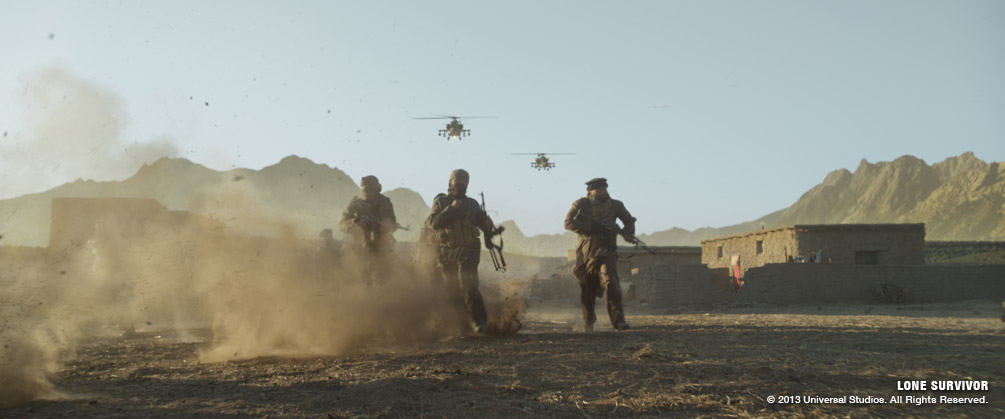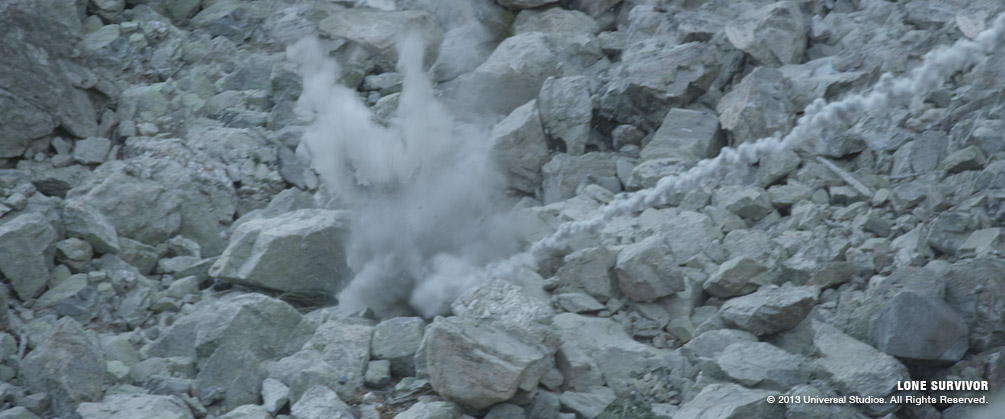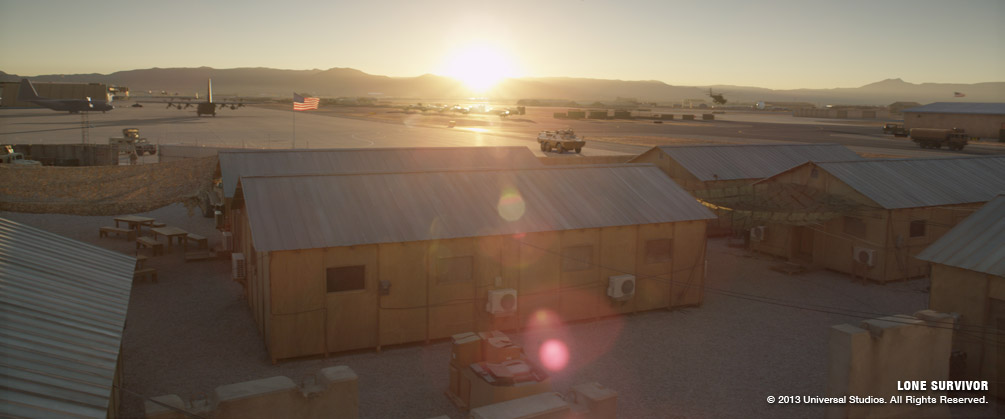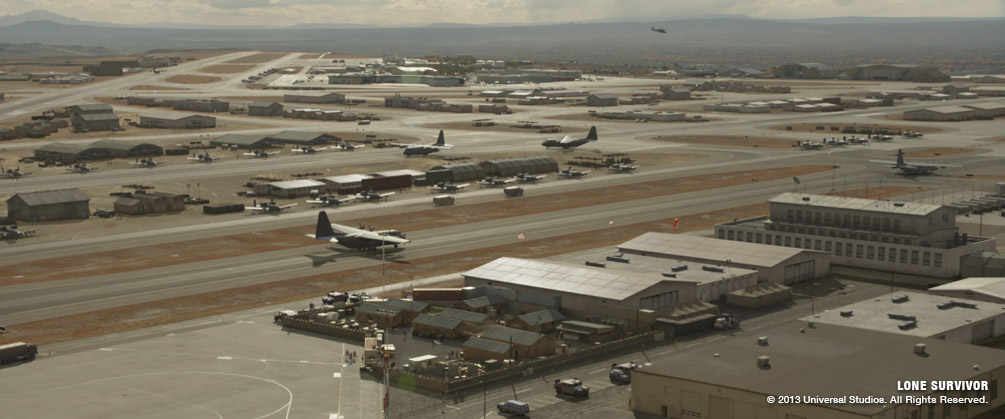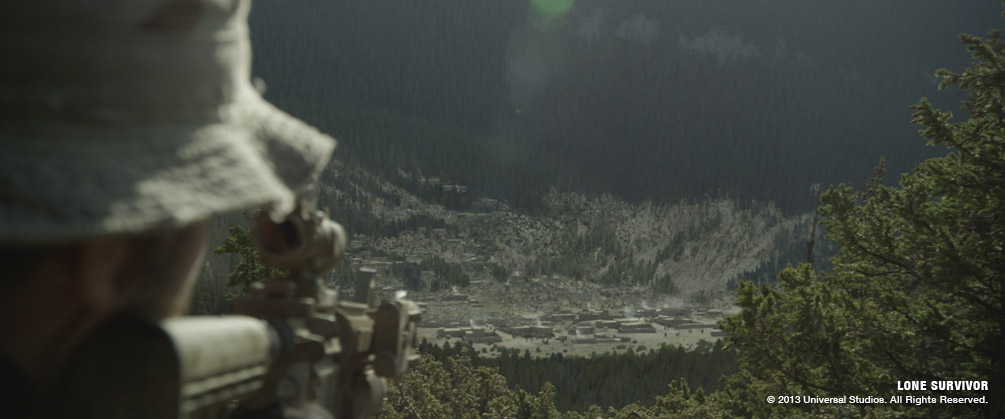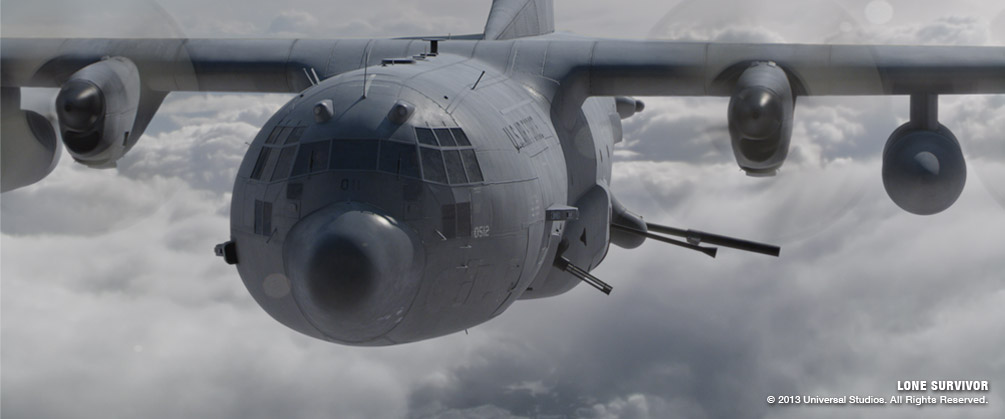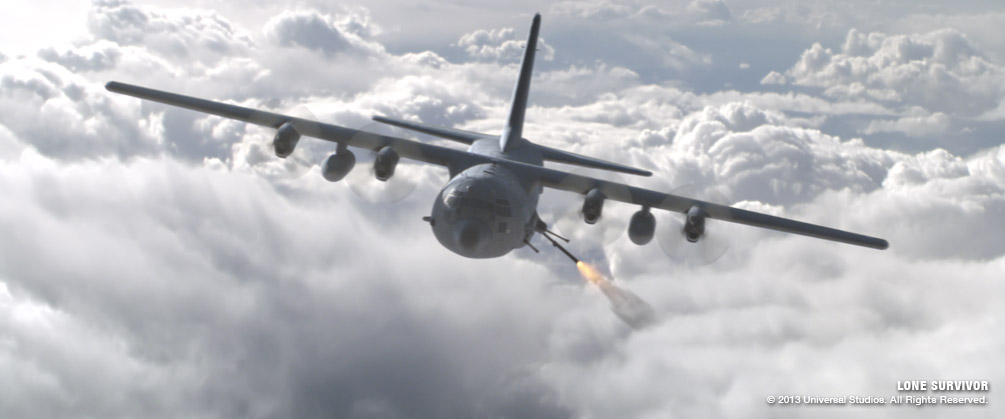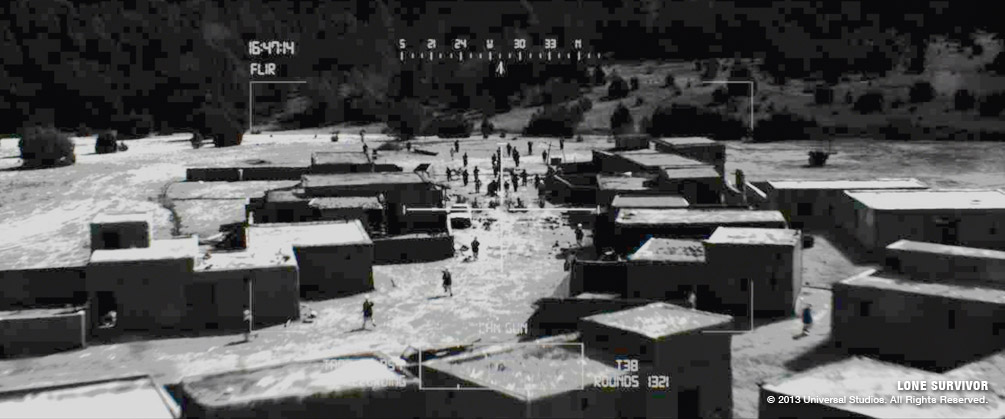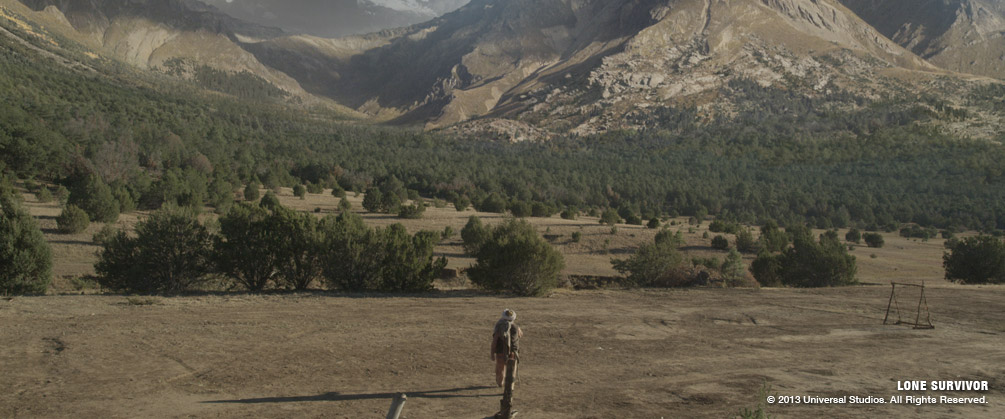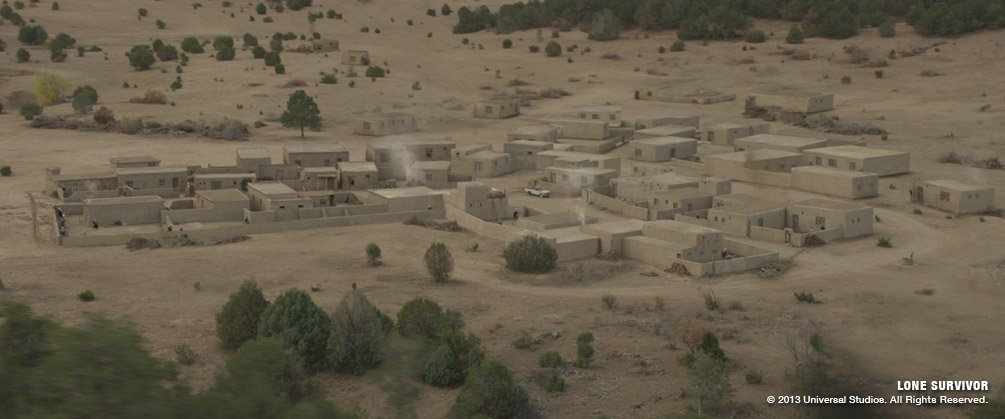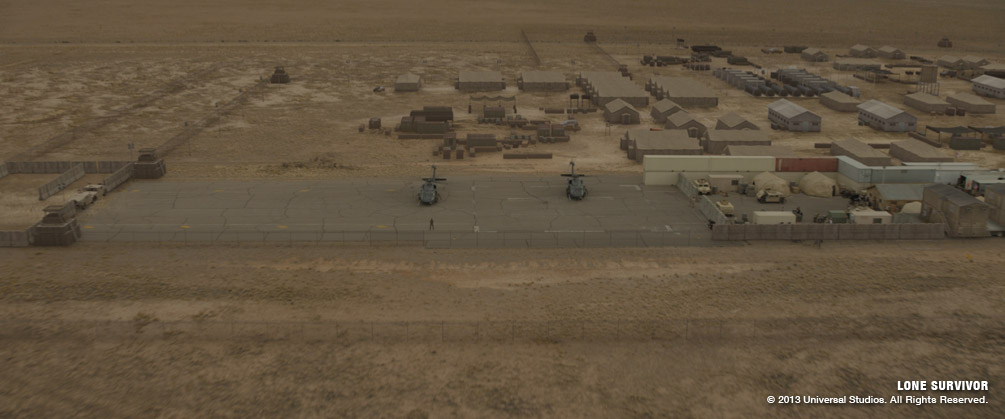Lone Survivor Case Study
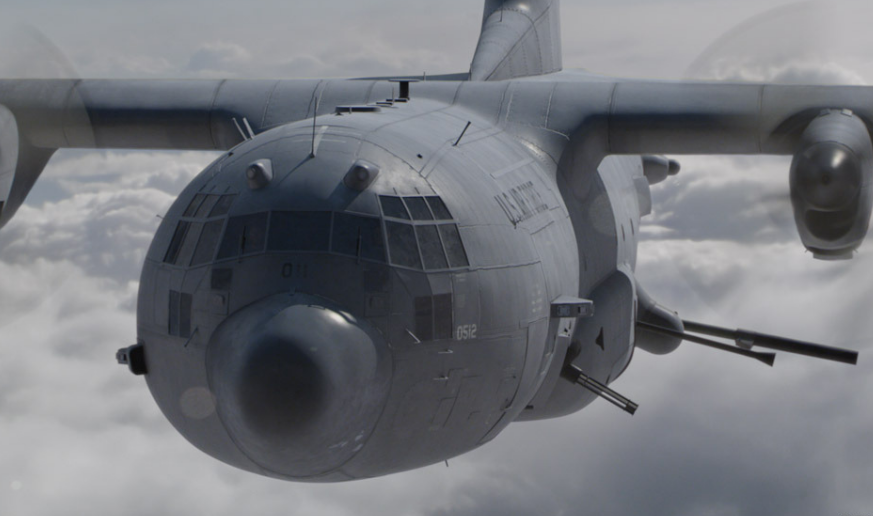
Case Study
From invisible set extensions, to computer-generated aircraft and digital gunfire, Image Engine’s covert VFX deliver an authentic experience for Lone Survivor.
Image Engine provided over 270 shots for Universal Pictures and Emmett/Furla Films’ Lone Survivor, a story of heroism, courage and survival directed by Peter Berg.
The film, based on the New York Times bestseller, tells the story of four Navy SEALs on an ill-fated covert mission to neutralize a high-level Taliban operative, who are ambushed by enemy forces in the Hindu Kush region of Afghanistan.
Despite its gritty, realistic filmmaking approach, Lone Survivor required a considerable scope of invisible visual effects to help tell this incredible story. This ranged from environment matte paintings and digital set extensions to computer-generated aircraft and digital gunfire.
Image Engine was approached to come on board to provide the majority of visual effects, working in collaboration with Industrial Light & Magic (ILM). The team had worked with visual effects producer Petra Holtorf on Berg’s previous film Battleship and Holtorf on The Thing. Jesper Kjölsrud shared the visual effects supervisor credit with Grady Cofer of ILM, with compositing supervisor Bernhard Kimbacher joining him on set to supervise in New Mexico.
Graphic Gunfighting
To help the filmmakers relate the essential experience of Operation Red Wings, Image Engine added digital bullet hits, muzzle flashes and rocket-propelled grenades with smoke trails to the gun battle scenes. These scenes were all achieved through a combination of visual effects and practical special effects.
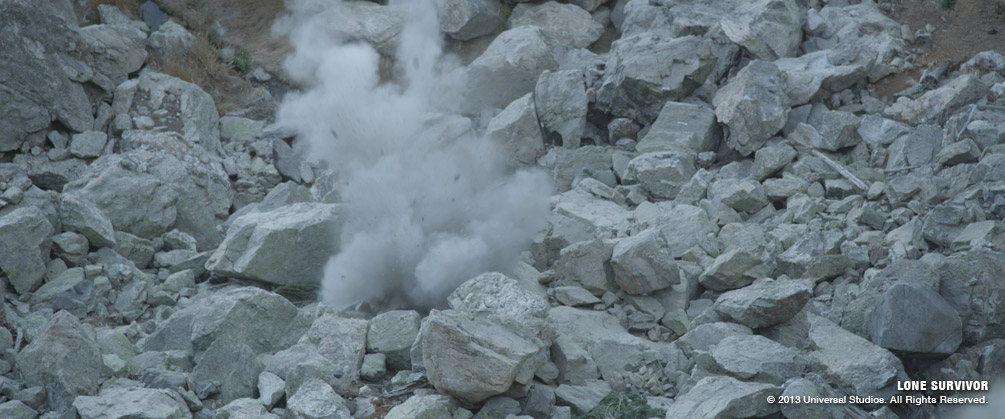
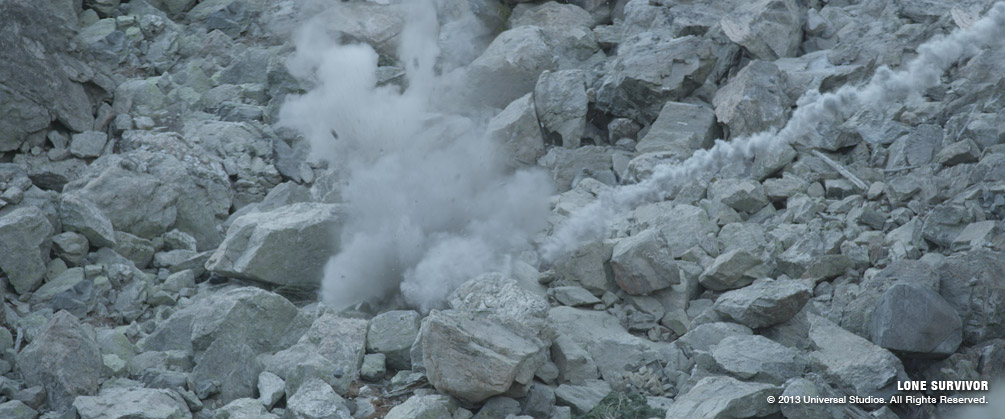
The SFX team rigged up every battle with mortars, as well as blood and dust squibs, and VFX-generated 2D elements to match the ones used on set. Digital blood and gore elements were added, as well as dust, debris and explosion elements, to further enhance the action – giving each shot the chaotic feel the story needed.
Desert Landscapes
Down to the last detail, the desert environments had to look authentic. Work ranged from building full environments to seamlessly tying together shots filmed in diverse locations. During filming Kjölsrud and Kimbacher captured as much reference photography of the environments as possible, which involved the physical challenges of hiking the steep mountain terrain of New Mexico.

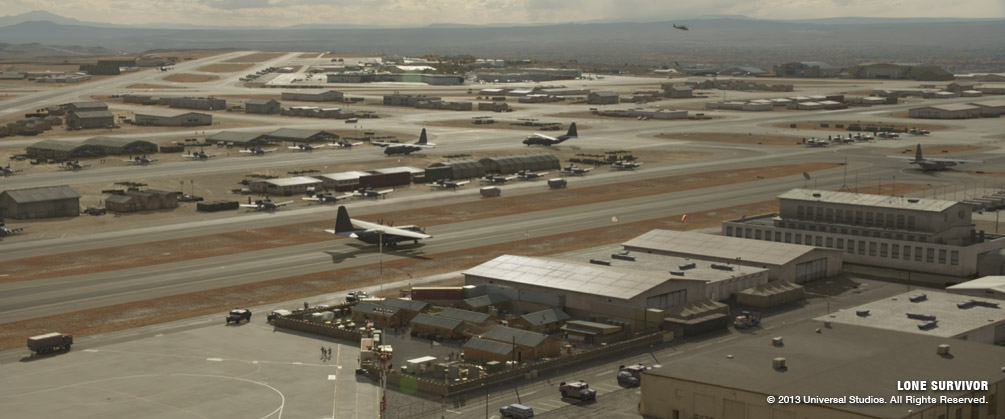
“We were creating environments that portrayed the vastness of the mountain ranges found in Afghanistan, yet they had to tie in with all the non-VFX shots which were shot in a number of different locations in New Mexico,” explained Kjölsrud. “We bridged this gap by using a lot of the reference photography we acquired on set and then also added some hi-res photography of locations in Afghanistan.”
Matte paintings played an important role and were often incorporated into the scenes to create the expanses of mountainous desert terrain. “Some of the work, like the military base extensions, were 3D renders which were handed over to matte painting to add in detail where needed and then handed to comp to project back on the geometry – while other environments, like the mountain ranges, were full matte paintings projected on cards in comp,” said Kimbacher.
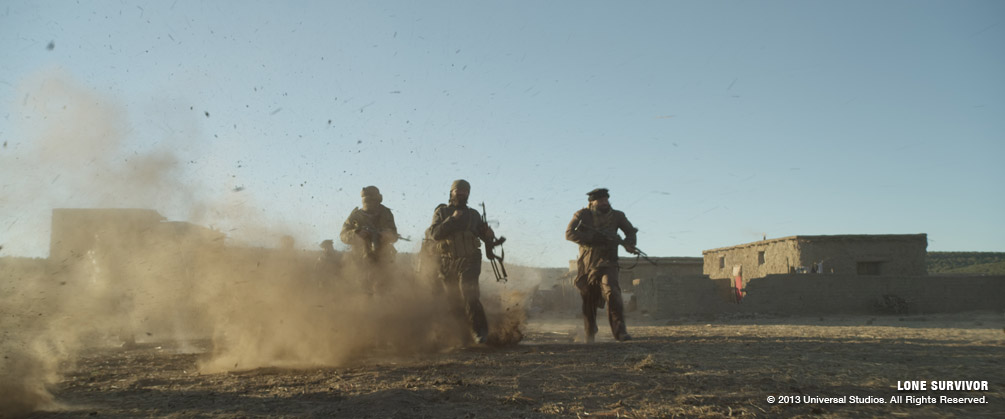
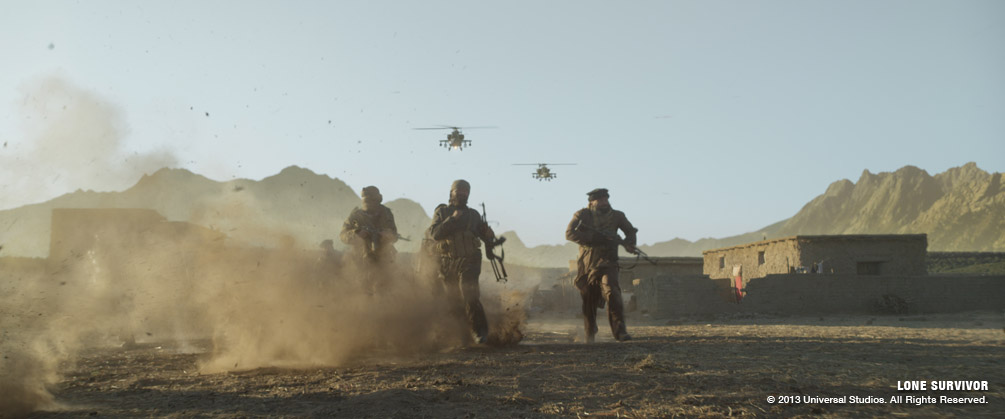
Gillian George headed up the matte painting team at Image Engine. “Many of the matte paintings were used to establish important points in the film’s narrative, but relatively little photographic reference existed for the remote region where much of the action took place,” she explained. “One of our biggest challenges was re-imagining the Hindu Kush environment in a way that would allow our matte paintings to blend seamlessly with the plates while giving a believable representation of the high mountains of Afghanistan and moving the story forward in very precise ways. We were very fortunate that Bernie took extensive on-set photography with an eye for what would be needed for matte painting once back in Vancouver. This allowed our small team to be very efficient in creating many of the more straightforward matte paintings, drawing upon that photography to ensure consistency and photorealism in the landscapes across a variety of shots.”
One of the most challenging environment shots involved achieving the ‘jumps’ made by the Navy SEALs off two cliffs. Shots showing the point of view of the SEALs looking down from the top of the cliff were created by visual effects and had to tie in with shots taken before and after the jump. A visual effects shoot took place to create plates as a realistic starting point, which was enhanced with reference photos taken on set to tie it into the rest of the sequence.
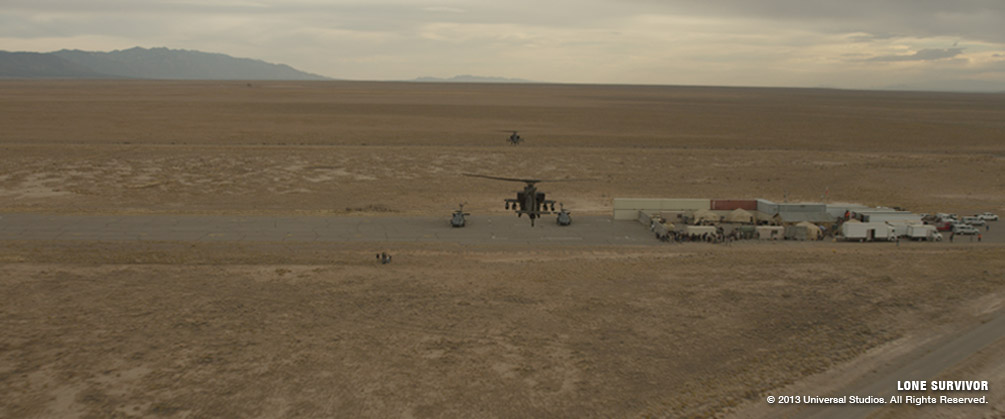
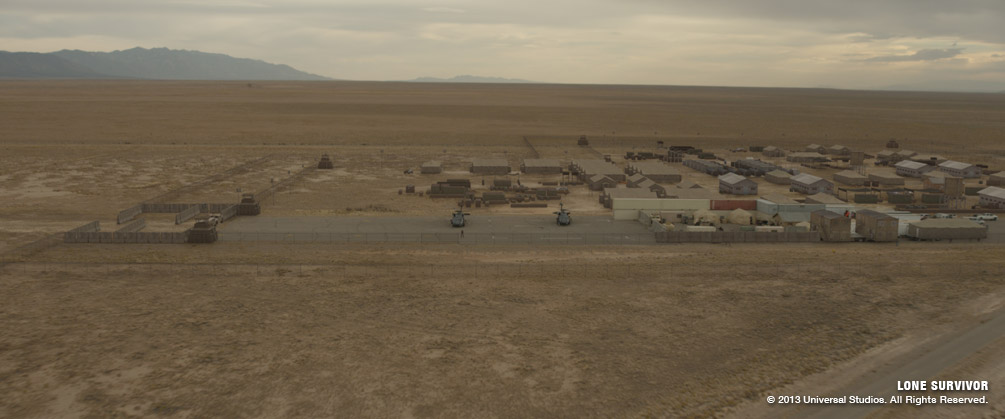
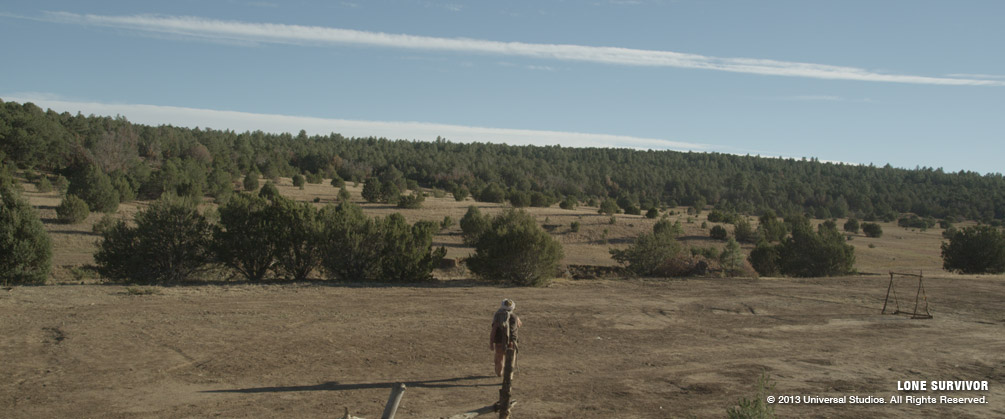
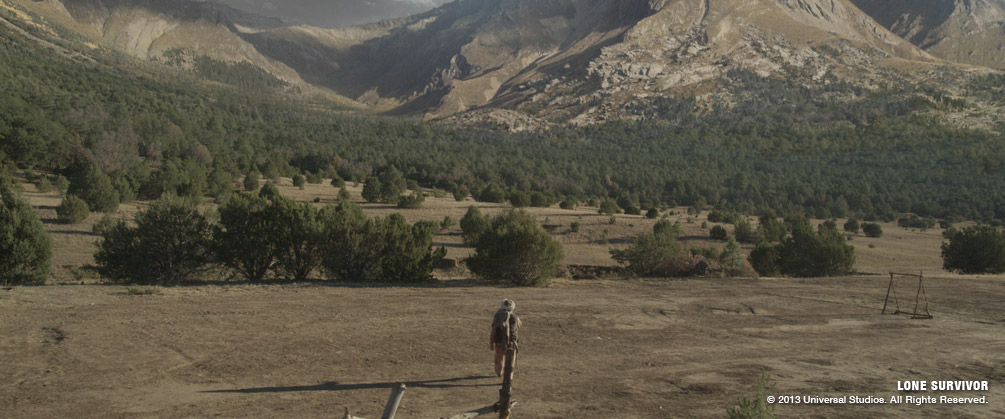
The aerial shots on the army base were heavily augmented. 3D renders of a full Army base—complete with buildings, vehicles, airplanes, helicopters and extensive matte painting work—were carefully composited to tie the key scene together. “Luckily, having just finished Zero Dark Thirty, we had some great know-how to draw from,” recalled Kimbacher. “Most of these shots included clean up of any buildings, vehicles and people that didn’t fit the shot, 3D renders of a full army base with buildings, vehicles, airplanes and helicopters and extensive matte painting work to add in detail – as well as some love from compositing to tie it all seamlessly together.”
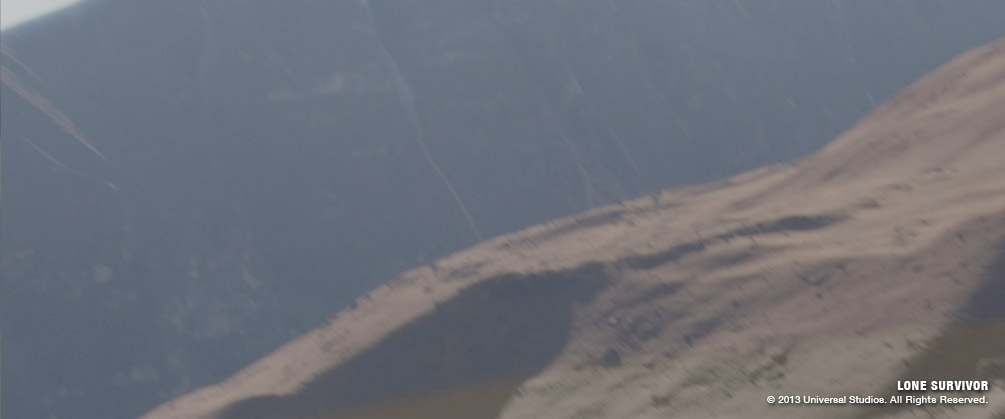
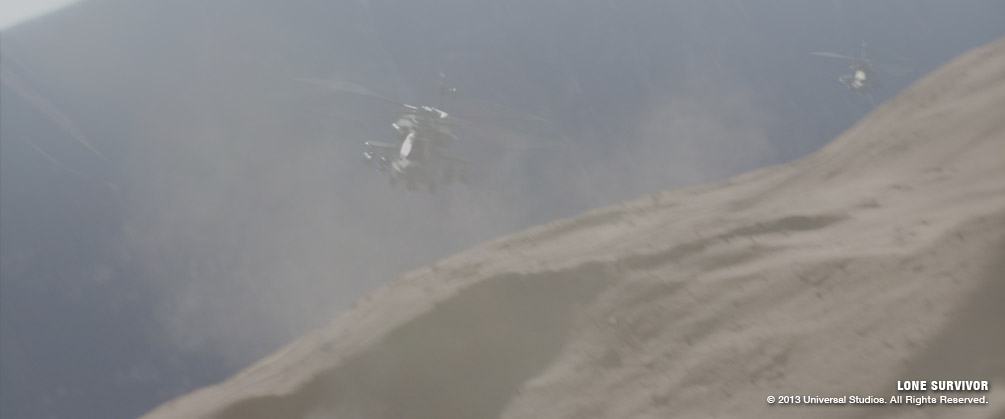
CG Aircraft
The team built computer-generated aircraft, which included military Apache and Chinook helicopters, as well as the larger C-130 Hercules aircraft, a four-engine turboprop military transport vehicle.
“We knew we’d have to do some hero CG helicopter work while we were filming, so we did a full texture reference shoot of all three helicopters at the Air Force base set, which we used as a basis to build our 3D models,” said Kimbacher. A highly experienced crew at Image Engine worked on the vehicles, achieving a naturalistic look and motion. A large number of HDR (high dynamic range) images were generated on set at different locations and different times of day to seamlessly integrate the CG assets into a variety of shots. Real helicopters are also featured in many of the shots. “Having the real helicopters was great to get the perfect reference for our CG craft, but also meant that we had to match the look very closely,” said Kjölsrud. “There was very little margin for error in our work, as we’d often cut from a real helicopter straight to a CG one.”
All C-130 airplane shots involved a computer-generated plane over stock footage of clouds with FX elements for when the guns are firing. “Without real C-130’s in the film to match to, there was a certain degree of creative freedom in the look development stage, but it was important to match the look of the real C130 reference photos to get a true sense of realism,” said Kimbacher.
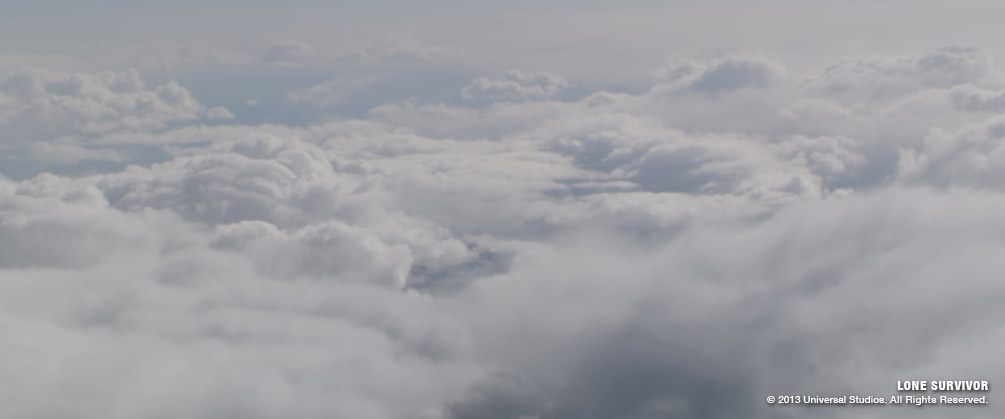
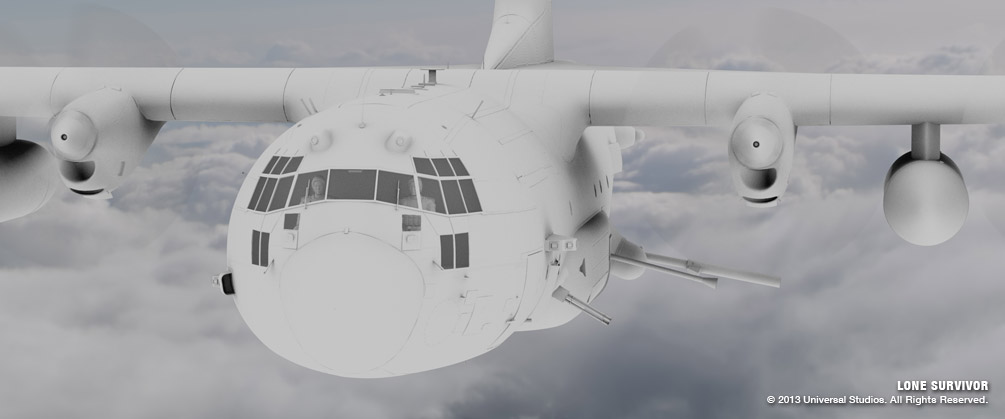
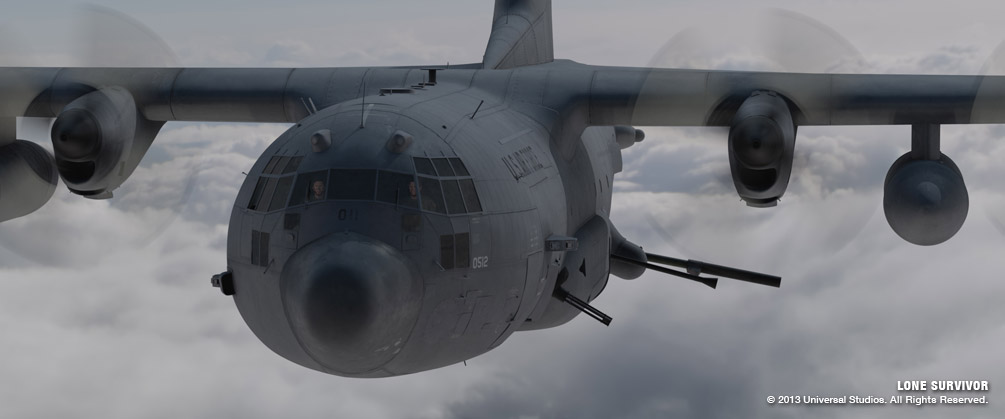
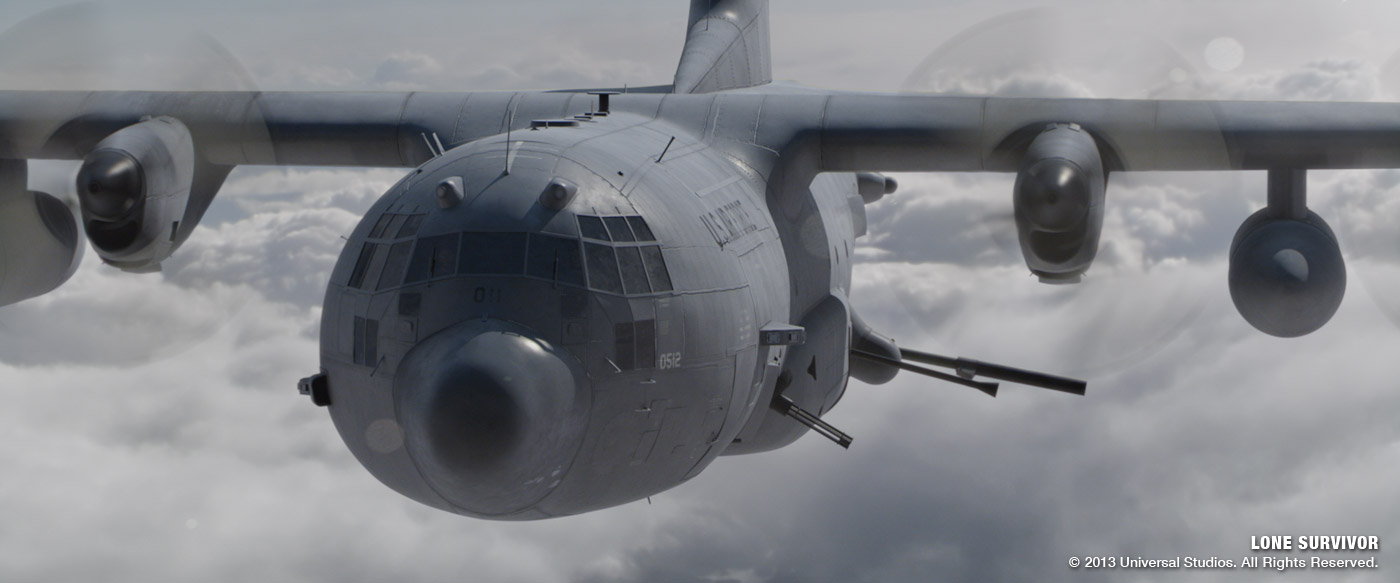
Integrating these vehicles naturally into the plates was crucial to the scene and demanded close attention from the compositors. “Our asset, look development and lighting team did a great job with the helicopters, getting those most of the way there, so that our comp team could focus on integrating the assets with the atmosphere and dust instead of having to make the asset work for the shot,” explained Kimbacher. FX generated additional dust clouds to help them convincingly integrate into the dusty desert environment.
Day for Night
All of the nighttime aerial shots were created as day-for-night visual effects shots. A day-for-night grade was added at the end of the final comps, which allowed the 2D team to quickly make adjustments without having to go back to lighting.
Throughout all the work, the focus for the visual effects of Lone Survivor was on achieving truly authentic results in service of the narrative.
“Thanks to all the dedicated crew at Image Engine, who worked so hard to deliver rigorously realistic effects on this project,” said Kjölsrud, “we’re proud to have contributed to this remarkable story.”
“For Image Engine this was a real continuation of our work on Zero Dark Thirty, and demonstrates our commitment to creating high-end supporting visual effects alongside our VFX-driven projects,” said visual effects executive producer, Steve Garrad. “Special thanks to Peter Berg, Petra Holtorf and all our friends at Universal Pictures and Film 44 – we look forward to working with you again soon.”


